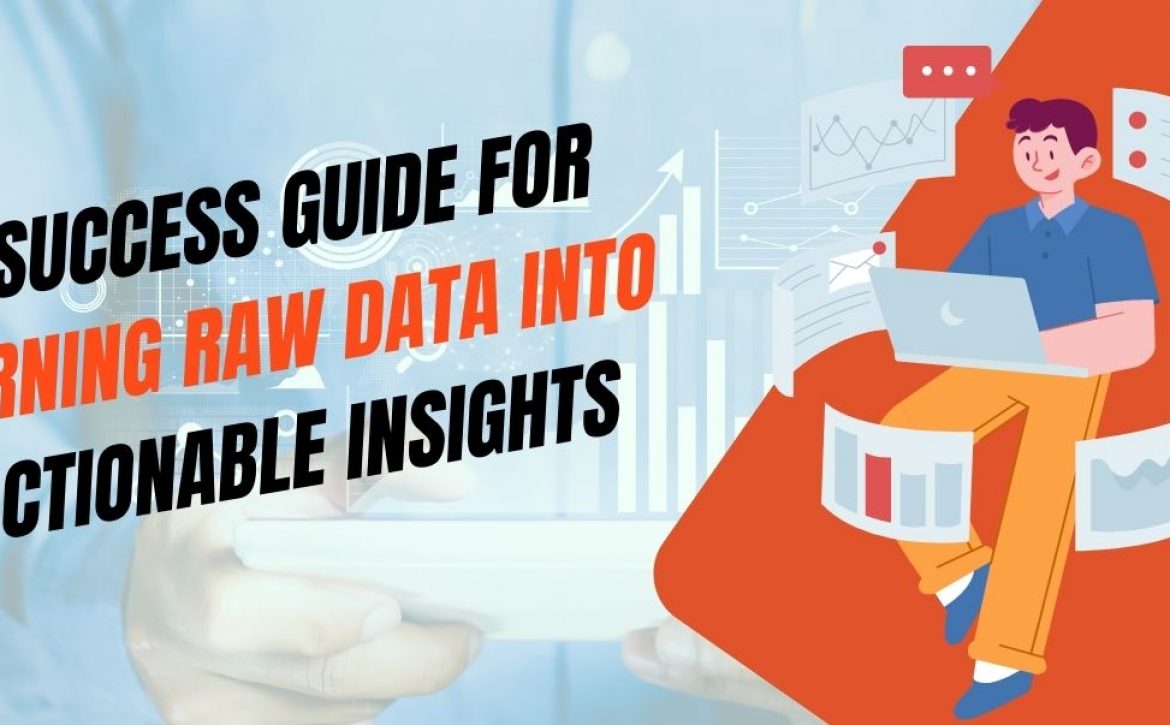A Success Guide for Turning Raw Data into Actionable Insights
Organizations today have access to enormous amounts of unstructured data. However, this data’s potential stays unrealized without efficient processing and analysis. Making decisions based on actionable insights from raw data is essential for maintaining a competitive edge. In this blog post, we’ll examine the key steps in this transformational process and illustrate how a data processing company may support businesses in gaining actionable insights.
- Understand Your Data:
It is critical to comprehend the nature and qualities of your data before beginning any data processing. Consider important inquiries like: What kind of data do you have? Is it unstructured, partially structured, or both? What source does it have? What are your objectives and goals? Understanding your data clearly will provide the groundwork for efficient processing and analysis.
- Define Objectives and Goals:
Having clearly defined objectives and goals is essential to turning data into insights that can be put to use. Determine the precise queries you wish to address or issues you wish to resolve. This stage will assist in directing your data processing efforts and guarantee that you derive pertinent insights that are in line with your company’s requirements.
- Data Collection and Organization:
It’s time to gather and arrange the pertinent data once you have a firm grasp on your data and objectives in mind. Various data sources, such as internal databases, external APIs, or outside data providers, are gathered in this step. A data processing business can speed up this process by utilizing its knowledge and access to a variety of data sources.
- Data Cleaning and Preprocessing:
Errors, duplication, missing numbers, and inconsistencies are frequently present in raw data. To assure the quality and dependability of the data, data cleaning and preprocessing entail removing or fixing these problems. In this step, the data may also be formatted consistently and any outliers or abnormalities may be addressed. A data processing business may effectively manage data cleansing by utilizing cutting-edge algorithms and methods.
- Data Integration and Transformation:
Data is frequently saved in many formats and from various sources by organizations. The process of integrating various data sets into a single format for analysis is known as data integration. The data may need to be transformed into a standard format or schema at this point. This procedure offers a comprehensive perspective of the data, which facilitates efficient analysis.
- Data Modeling and Analysis:
After the data has been organized, combined, and investigated, the next stage is to use different analytical methods to conclude. This can include advanced data analysis techniques including predictive modeling, machine learning algorithms, and statistical analysis. A data processing company with experience in these fields can assist businesses in better comprehending their data and gaining insightful information.
- Actionable Insights and Visualization:
To provide useful insights that guide decision-making, raw data must be transformed. Organizations can more effectively grasp and communicate the findings by visualizing the analysis findings. Charts, graphs, and dashboards are examples of data visualization approaches that enable compelling and logical presentations of insights. A data processing business can help with the creation of informative visualizations that are visually appealing and successfully communicate the acquired insights.
- Data Security and Compliance:
Data security and compliance are crucial for firms handling sensitive data. Having access to strong security measures and compliance with data protection laws can be obtained by working with a trustworthy data processing firm. To safeguard private data, do things like use encryption, access limits, and data anonymization strategies.
- Collaborate and Communicate:
Fostering collaboration and communication inside the company is crucial for maximizing the insights obtained from data processing. Inform key decision-makers, department heads, and teams working on strategy implementation about the findings. Organizations may make better decisions and affect good change by building a data-driven culture and encouraging information exchange.
The Role of a Data Processing Company:
There are many advantages to working with a specialized data processing business. These businesses are skilled at managing, processing, and analyzing data. They are equipped with the technologies, expertise, and tools needed to effectively tackle challenging data processing jobs. Utilizing their services allows businesses to save time, and money, and have access to cutting-edge data processing methods that would otherwise be difficult to apply internally.
Conclusion:
For businesses looking to gain a competitive edge in today’s data-driven environment, turning raw data into actionable insights is a crucial step. Businesses can realize the full potential of their data by following the suggested procedures and working with a reputable data processing firm. The route from raw data to meaningful insights involves careful preparation, experience, and the appropriate technologies, from data collection and cleaning to advanced analysis and visualization. Accept the power of data processing, and enable your company to make judgments based on data that will lead to success.
Partner with a trusted data processing company today and embark on a transformative journey that will revolutionize the way you leverage your data.



